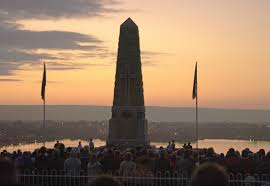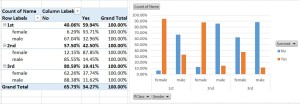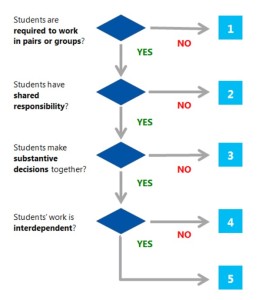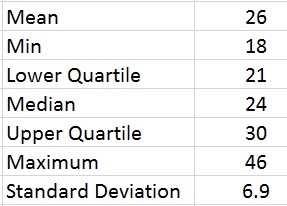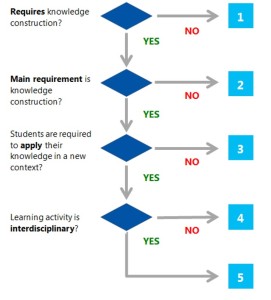Students can use 21st century learning to learn about 20th century events
20th century events remembered
RMS Titanic set sail on 10th April 1912. It departed from Southampton bound for New York on its maiden voyage. Tragically, four days later, it hit an iceberg off the coast of Newfoundland. The Titanic sank and over 1500 lives were lost. The memory of this event is etched deep in the global psyche. Three years later, in another part of the world, the Australian and New Zealand Army Corps (ANZAC) forces landed at Gallipoli. Despite their gallantry, the ANZACs were defeated and suffered heavy losses. Their sacrifice has never been forgotten. A century later, the spirit of the ANZACs lives on and flourishes.
21st century learning about 20th century events
Students in the 21st century can be equipped to attain a deep understanding of these events. Large amounts of relevant data have survived with surprising accuracy given the time that has elapsed. With the aid of modern technology, students can analyse and synthesise this data efficiently. The stories behind the data have also been preserved and may be harnessed to stimulate thinking which crosses curricular boundaries.
Applying 21st Century Learning Design
21st Century Learning Design encompasses six dimensions each of which are aimed at nurturing competencies (Laingworthy & Parvell, 2015). The dimensions are:
• collaboration
• knowledge construction
• self-regulation
• real-world problem-solving and innovation
• the use of ICT for learning
• skilled communication
Possibly all of these dimensions could be included when designing learning activities about 20th century events, such as the sinking of the Titanic and the landing at Gallipoli. However, the dimensions of collaboration and knowledge construction will be the main focus here in this description of investigations designed for students of mathematics.
Collaboration supported by a OneNote Class Notebook
A OneNote Class Notebook is an effective way to enable students to work together on an investigation. Theory notes, data in spreadsheet form, task instructions and helpful website links can all be housed in the content library which everyone can access. In the case of the Titanic, the full passenger list is provided in an Excel spreadsheet with headings as shown in Figure 1 below.
Figure 1. The Passenger List of the Titanic
An initial examination of the data classifications raises the question: Did some passengers have a better chance of survival than others? The classifications also assist groups of students in deciding on their work plans to conduct an investigation. Working interdependently, group members can consider the potential impact of Passenger Class, Gender and Age on an individual passenger’s chances of survival. But there are stories behind the data, and it is in the telling of stories that the students can begin the collaborative process. Group members can each research the story of an individual passenger and share the story for feedback from the group using a collaborative space on the Class Notebook. There are many stories to choose from, as exemplified in Figure 2.
.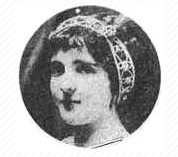 .
. 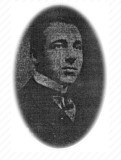
Mrs Mary Eloise Smith (née Hughes) and Mr Lucian Phillip Smith
1st Class Female Passenger: Survivor 1st Class Male Passenger: Victim
On 29 November 1912, a son, Lucian Phillip Smith II, was born.
Figure 2. A story from the Titanic.
Having shared responsibility for researching the underlying stories, and having worked interdependently to explore the significance of Passenger Class, Gender and Age, students can work together to reach substantive decisions about the chances of survival of different types of passengers. They can construct support for their decisions by using pivot tables and charts in Microsoft Excel as exemplified in Figure 3 below. This technology is very useful here given that there were over 1300 names on the passenger list.
Figure 3. Pivot table and chart in Excel
This learning activity can now be assessed using the collaboration rubric from the 21st Century Learning Design framework (Microsoft, 2015). Since the activity requires group work, shared responsibility, substantive decisions together and interdependent work, it reaches level 5 in the rubric.
Figure 4. The 21CLD collaboration rubric
Knowledge construction supported by Excel
Every year, in April, services are held in schools throughout Australia and New Zealand to commemorate ANZAC Day. Poems are recited, the most famous of which begins
They shall grow not old, as we that are left grow old. Age shall not weary them…
Binyon, R. (1914)
The concept of age is significant in this context and one that students can attain a multi-faceted understanding of. An initial examination of a spreadsheet which contains real data about ANZACs from a local region, in this case East Brisbane, shows the ages of the soldiers at the time of embarkation to Gallipoli.
Figure 5. Spreadsheet containing data about the ANZACs from East Brisbane
Students can apply their skills in analysing numeric data to this new context. Constructing knowledge from statistics requires more than just calculating an average. Students are aware of this and can deepen their knowledge in this context by using a wider range of statistical measures. The use of formulae in Excel allows students to construct knowledge about how the ages were distributed.
Figure 6. Using statistics formulae in Excel
Based on the results from Excel, students can use the drawing tool in OneNote to produce a boxplot which illustrates the spread of the distribution of the ages.
Figure 7. A boxplot draw in OneNote
The distribution is skewed… 50% are below the age of 24…
Learning activities become interdisciplinary
This now raises questions which cross over curriculum boundaries. In 1914, 50000 young Australian men enlisted voluntarily (there was no conscription). They were required to pass stringent medical checks. Thousands were turned away. What was the driving force that made young men so eager to enlist? Are there any parallels with our contemporary society? Questions such as this take learning activities to an interdisciplinary level. The statistical investigation allows students to use their knowledge and skills in a new context. In the process it sheds light on issues and confirms some views. Yes, a first class female passenger on the Titanic had a much better chance of survival than a third class male passenger. The statistical investigation verifies this. But what were the social principles of the time that influenced this outcome?
Using the Knowledge Construction rubric from the 21st Century Learning Design framework, it can be seen that the learning activities related to the Titanic and the ANZAC tradition can both be pitched at level 5. The students are required to use their statistical knowledge and skills in new contexts. In addition, the thematic nature of the activities raises issues that spill over disciplinary boundaries.
Figure 8. The 21CLD knowledge construction rubric
Scope for other competencies to be addressed
The 21st Century Learning dimensions of collaboration and knowledge construction have been examined in relation to the learning activities. There is scope for other dimensions to be considered, however, notably the use of ICT for learning and skilled communication. In both cases, the construction of knowledge required the use of ICT. The ideas surrounding the ANZAC tradition may not be easily understood by students outside of Australia and New Zealand. Communicating these ideas to students in other lands using extended or multi-modal communication would be a meaningful use of 21st Century Learning.
Conclusion
The purpose of 21st Century Learning Design is to develop a range of worthwhile competencies in students. By investigating events that took place in the 20th century, students can acquire these 21st century learning competencies. This has been exemplified by describing investigations into the sinking of the Titanic and the landing of the ANZACs at Gallipoli. It has been shown in these examples that the 21st Century Learning dimensions of collaboration and knowledge construction can be addressed effectively, and that there is scope for further development of the use of ICT for learning and skilled communication.
References
Australian Society for the Study of Armed Conflict and Society (ACSACS) at UNSW Canberra. (2015). Australian ANZACs in the Great War 1914-1918.
https://www.aif.adfa.edu.au/index.html
Binyon, R. (1914). For the Fallen. Retrieved from http://www.greatwar.co.uk/poems/laurence-binyon-for-the-fallen.htm
Encyclopedia Titanica. (2015). Titanic Passenger List: Comprehensive Titanic Passenger List and Biographies. Retrieved from http://www.encyclopedia-titanica.org/titanic-passenger-list/.
Laingworthy, M., Parvell, M. (2015). 21CLD Professional Conversation Guide. Microsoft.
The National Archives. (2015). Titanic. Retrieved from http://www.nationalarchives.gov.uk/titanic/

